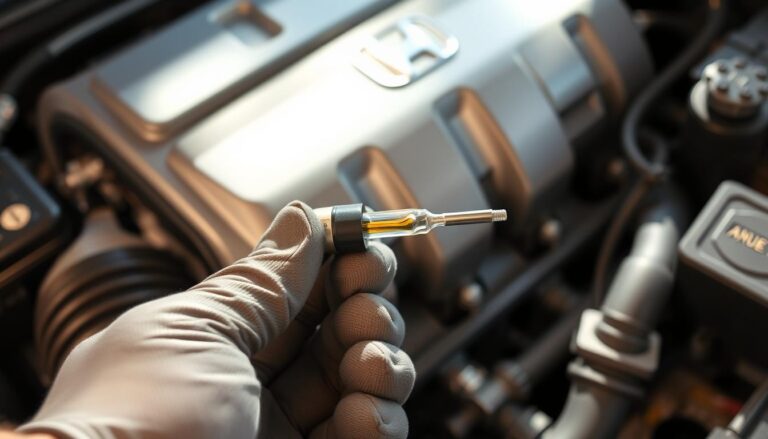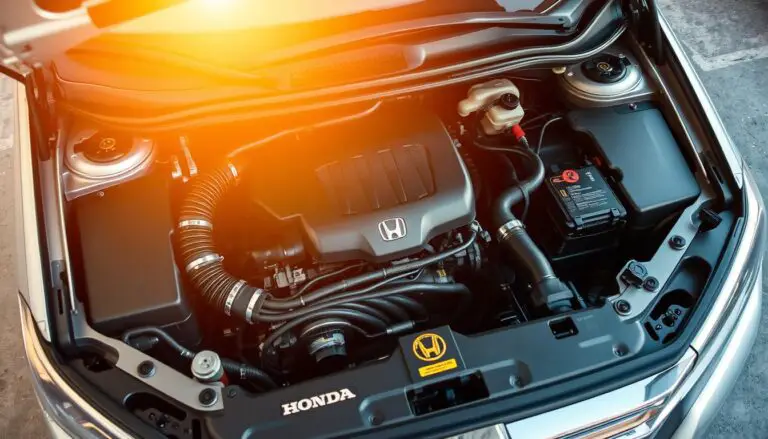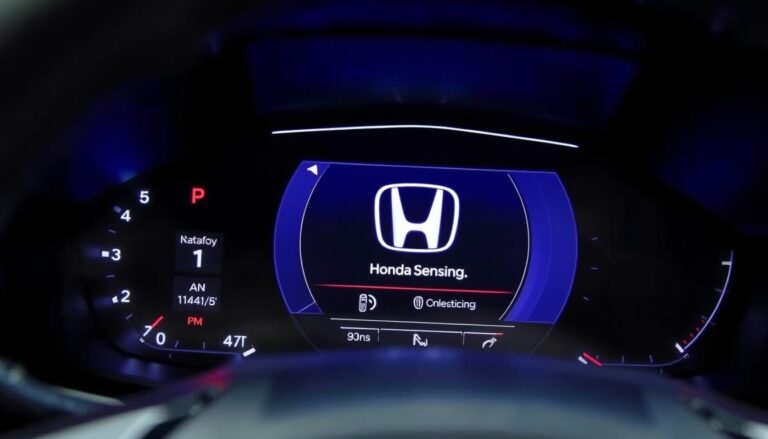Experiencing transmission problems can be a significant concern for Honda vehicle owners. A faulty transmission can lead to decreased performance and potentially cause safety issues on the road.
Understanding the diagnosis process is crucial for identifying and addressing these issues effectively. This article aims to provide a comprehensive guide on diagnosing and repairing Honda transmission faults, helping owners maintain their vehicles’ optimal performance and longevity.
Key Takeaways
- Understanding the signs of transmission faults in Honda vehicles.
- Learning the diagnostic process for transmission issues.
- Exploring repair options for common transmission problems.
- Tips for maintaining your Honda’s transmission health.
- Importance of regular vehicle maintenance.
Understanding Honda Transmission Systems
Honda vehicles are equipped with various transmission types, including automatic, CVT, and manual transmissions, each designed to optimize performance and fuel efficiency. Understanding these transmission systems is essential for diagnosing and repairing common issues.
Types of Honda Transmissions: Automatic, CVT, and Manual
Honda offers a range of transmission types to suit different models and driving needs. Automatic transmissions are known for their smooth shifting, while CVT (Continuously Variable Transmission) provides optimal fuel efficiency. Manual transmissions, on the other hand, offer drivers more control over gear shifting.
How Honda Transmissions Function in Civic, Accord, and CR-V Models
In popular models like the Civic, Accord, and CR-V, Honda transmissions are designed to enhance performance and reliability. For instance, the Civic’s CVT transmission is optimized for fuel efficiency, while the Accord’s automatic transmission provides smooth acceleration.
Evolution of Honda Transmission Technology (1990s-Present)
Since the 1990s, Honda has continuously improved its transmission technology, introducing advancements like CVT and multi-mode transmissions. These innovations have enhanced fuel efficiency, performance, and overall driving experience.
| Transmission Type | Models | Key Features |
|---|---|---|
| Automatic | Accord, CR-V | Smooth shifting, multiple gear ratios |
| CVT | Civic, HR-V | Optimal fuel efficiency, continuously variable gear ratios |
| Manual | Civic Si, Type R | Driver control, precise gear shifting |
Honda Transmission Fault: Common Causes, Diagnosis & Repair
Understanding the common causes of Honda transmission faults is crucial for effective diagnosis and repair. Transmission issues can arise from various factors, including manufacturing defects, maintenance oversights, and design flaws.
Overview of Transmission Failure Rates in Popular Honda Models
Honda transmission failure rates vary across different models. Some models are more prone to transmission issues due to their design and manufacturing process.
| Model | Transmission Failure Rate |
|---|---|
| 1999-2004 Odyssey | High |
| 2003-2007 Accord | Moderate |
| 2001-2005 Civic | Moderate |
High-Risk Models: 1999-2004 Odyssey, 2003-2007 Accord, 2001-2005 Civic
Certain Honda models are considered high-risk for transmission failures. The 1999-2004 Odyssey, 2003-2007 Accord, and 2001-2005 Civic are among these models, often experiencing issues such as slipping, hesitation, and failure to engage gears properly.
Manufacturing Issues vs. Maintenance-Related Failures
Transmission failures in Honda vehicles can be attributed to both manufacturing issues and maintenance-related problems. While some failures are due to inherent design flaws or manufacturing defects, others result from inadequate maintenance, such as failing to change transmission fluid regularly.
Design Flaws in Early 2000s Models
Early 2000s Honda models, such as the 2001-2005 Civic and 2003-2007 Accord, had specific design flaws that contributed to higher transmission failure rates. These flaws included inadequate cooling systems and poorly designed transmission components.
By understanding these factors, Honda owners can take proactive steps to prevent transmission failures and address issues promptly when they arise.
Warning Signs of Honda Transmission Problems
Recognizing the warning signs of Honda transmission problems can save you from costly repairs down the line. Honda transmissions, whether automatic, CVT, or manual, can exhibit specific symptoms when they begin to fail.
Unusual Noises: Whining, Grinding, and Clunking Sounds
One of the first indicators of transmission trouble is unusual noises. Whining, grinding, or clunking sounds can signal worn-out or damaged components within the transmission. These noises may occur when shifting gears or when the vehicle is in neutral.
Shifting Issues: Delayed Engagement, Hard Shifts, and Slipping
Shifting issues are another common warning sign. Delayed engagement when shifting into gear, hard shifts, or slipping between gears can indicate transmission problems. These issues can be due to low transmission fluid levels, worn-out clutch packs, or faulty solenoids.
Fluid Leaks and Burning Odors: What They Indicate
Fluid leaks are a significant concern as they can lead to low fluid levels, causing the transmission to overheat and fail. A burning odor is often associated with overheating transmission fluid, indicating that the transmission is not functioning correctly.
Dashboard Warning Lights: D4, D5, and Check Engine Indicators
Modern Hondas are equipped with sophisticated dashboard warning lights. Illuminated D4 or D5 indicators can signal transmission issues, while the Check Engine Light may also come on due to transmission-related problems. It’s essential to consult your owner’s manual or a professional mechanic to diagnose the issue.
Diagnosing Honda Transmission Issues
Diagnosing transmission issues in your Honda vehicle is crucial for maintaining its performance and longevity. A thorough diagnosis helps identify problems early, reducing the risk of costly repairs down the line.
Step-by-Step Visual Inspection Process
A visual inspection is the first step in diagnosing Honda transmission issues. Start by checking the transmission fluid level and looking for signs of leaks under the vehicle.
Inspect the transmission pan and lines for any damage or corrosion. Make sure all connections are secure and not leaking.

Checking and Interpreting Honda Transmission Fluid Conditions
The condition of the transmission fluid can provide valuable insights into the health of your Honda’s transmission. Check the fluid’s color, consistency, and smell.
| Fluid Condition | Possible Cause |
|---|---|
| Dark or black fluid | Contamination or degradation |
| Fluid with a burnt smell | Overheating transmission |
| Fluid with metal particles | Internal transmission wear |
Honda-Specific OBD-II Codes for Transmission Problems
Honda-specific OBD-II codes can help diagnose transmission issues. Common codes include P0700, P0730, and P0740, which relate to transmission control system malfunctions.
Using HDS and Other Honda-Compatible Scanners
The Honda Diagnostic System (HDS) is a powerful tool for diagnosing transmission issues. It can read OBD-II codes, monitor transmission parameters, and perform advanced tests.
Professional Diagnosis: When DIY Isn’t Enough
While DIY diagnosis can be helpful, some transmission issues require professional attention. If you’re unsure about the diagnosis or need further assistance, consult a qualified mechanic or a Honda dealership.
DIY Repairs for Minor Honda Transmission Problems
Minor transmission problems in Honda vehicles can often be resolved at home with the right guidance and tools. This section will walk you through some common DIY repairs that can help keep your Honda running smoothly.
Honda Transmission Fluid Change: Step-by-Step Guide
Changing the transmission fluid is a crucial maintenance task that can help prevent transmission problems. To do this, you’ll need a socket wrench, drain pan, and the correct type of transmission fluid for your Honda model. Start by locating the transmission pan and draining the fluid into a pan. Once drained, replace the pan and fill with new fluid.
Replacing Transmission Filters in Accord and Civic Models
The transmission filter helps keep the transmission fluid clean. To replace it, you’ll need to purchase a new filter compatible with your Honda model. The process involves removing the transmission pan, taking out the old filter, and installing the new one before replacing the pan.
Shift Solenoid Cleaning and Replacement Procedure
Shift solenoids control the flow of transmission fluid. If they’re faulty, it can cause shifting issues. Cleaning or replacing them involves locating the solenoids, removing them, and either cleaning them with a suitable solvent or replacing them if damaged.
Safety Precautions for DIY Transmission Work
Safety is paramount when working under your vehicle. Ensure it’s on level ground and supported by jack stands. Wear protective gear, including gloves and safety glasses, to protect against fluid spills and sharp edges.
Required Tools and Equipment
Before starting any DIY transmission repair, make sure you have the necessary tools and equipment. This typically includes a socket set, drain pan, new transmission fluid or filter, and safety gear.
| Tool/Equipment | Purpose |
|---|---|
| Socket Wrench | Removing transmission pan bolts |
| Drain Pan | Catching old transmission fluid |
| New Transmission Fluid | Refilling transmission |
| Safety Gloves and Glasses | Protecting against spills and sharp edges |
For more complex issues or if you’re unsure about any aspect of the process, consider consulting a professional mechanic or visiting a reputable Honda dealership. You can also check if your Honda qualifies for warranty coverage or recall notices.
Major Honda Transmission Repairs and Costs
For Honda owners facing major transmission issues, understanding the repair costs and processes is essential for making informed decisions.
Major repairs often involve complex procedures and significant costs. One common issue is the replacement of solenoids, which play a critical role in transmission operation.
Solenoid Replacement: Procedure and Cost Breakdown
Solenoid replacement in Honda transmissions involves diagnosing the faulty solenoid, obtaining the correct replacement part, and performing the replacement. The cost can range from $200 to $500, depending on the model and labor rates.
Torque Converter Issues in Honda CVT Transmissions
Torque converter issues in CVT transmissions can lead to significant repair costs. Symptoms include slipping or hesitation during acceleration. Repairing or replacing the torque converter can cost between $500 and $1,500.

Complete Transmission Rebuild vs. Replacement Options
When facing major transmission failure, owners must decide between a complete rebuild or replacement. A rebuild involves repairing or replacing damaged components, while replacement involves installing a new or remanufactured transmission. Costs vary widely, with rebuilds typically ranging from $1,000 to $3,000 and replacements from $1,500 to $4,000.
Cost Comparison: Dealer vs. Independent Shop vs. DIY
The cost of transmission repairs can vary significantly depending on whether the work is done at a dealership, an independent shop, or DIY. Dealerships often charge the highest labor rates, while independent shops may offer more competitive pricing. DIY repairs can save on labor costs but require specialized tools and expertise.
| Service Provider | Typical Labor Cost | Total Repair Cost |
|---|---|---|
| Dealership | $100-$150 per hour | $1,500-$4,500 |
| Independent Shop | $75-$120 per hour | $1,000-$3,500 |
| DIY | $0 | $500-$2,000 |
Honda Transmission Recalls and Warranty Coverage
Understanding Honda transmission recalls and warranty coverage is crucial for owners of affected models. Over the years, Honda has issued several recalls and extended warranties due to transmission-related issues.
Historical Honda Transmission Recalls and Extended Warranties
Honda has a history of transmission-related recalls, particularly for certain model years. For instance, the 1999-2004 Odyssey and 2003-2007 Accord models have been subject to recalls due to transmission problems. It’s essential for owners of these models to check if their vehicle is affected.
- Recalls: Honda has recalled various models due to issues such as transmission slipping, failure to engage gears, and other related problems.
- Extended Warranties: In some cases, Honda has extended the warranty on transmission components for affected models, providing additional coverage beyond the standard warranty period.
Checking if Your Honda Qualifies for Warranty Coverage
To determine if your Honda qualifies for warranty coverage or recall repairs, you can visit Honda’s official website or contact your local dealership. You’ll need to provide your Vehicle Identification Number (VIN) to check for any open recalls or warranty extensions.
For more information on Honda transmission problems and recalls, you can visit https://www.youcanic.com/honda-transmission-problems/.
Dealing with Honda Customer Service for Transmission Issues
If you’re experiencing transmission issues with your Honda, dealing with customer service can be a crucial step. Here are some tips:
- Be Prepared: Have your VIN and service history ready.
- Be Clear: Explain your issue in detail, including any error messages or symptoms.
- Follow Up: If your issue isn’t resolved immediately, ask for a case number and follow up as necessary.
Class Action Settlements for Specific Models
Some Honda models have been part of class action settlements due to transmission issues. For example, certain models with CVT transmissions have been included in settlements. Owners of affected models should be aware of these settlements and the process for filing a claim.
By understanding Honda transmission recalls and warranty coverage, owners can better navigate issues related to their vehicle’s transmission. Whether it’s checking for recalls, dealing with customer service, or understanding class action settlements, being informed is key.
Conclusion
Understanding and addressing Honda transmission faults is crucial for the overall performance and longevity of your vehicle. Regular Honda transmission maintenance can help prevent common issues and ensure smooth operation.
A well-maintained transmission is vital for the optimal functioning of your Honda. By staying on top of transmission repair summary and addressing problems early, you can avoid costly repairs and extend the life of your vehicle.
For more information on transmission faults and repairs in other vehicle models, you can visit this resource on BMW transmission issues.
FAQ
What are the most common signs of Honda transmission problems?
Common signs include unusual noises like whining, grinding, and clunking sounds, shifting issues such as delayed engagement, hard shifts, and slipping, fluid leaks, and burning odors.
How do I diagnose Honda transmission issues?
Diagnosing involves a step-by-step visual inspection, checking transmission fluid conditions, understanding Honda-specific OBD-II codes, and using tools like the Honda Diagnostic System (HDS).
Can I perform DIY repairs for Honda transmission problems?
Yes, minor issues can be addressed through DIY repairs such as changing transmission fluid, replacing transmission filters, and cleaning or replacing shift solenoids, provided you follow safety precautions and use the required tools.
What are the costs associated with major Honda transmission repairs?
Costs vary depending on the repair, such as solenoid replacement, addressing torque converter issues, or complete transmission rebuilds versus replacements, and whether you use a dealership, independent shop, or DIY.
How do I check if my Honda is eligible for warranty coverage or recall for transmission issues?
Check Honda’s official website or contact their customer service with your vehicle’s VIN to determine eligibility for warranty coverage or recall related to transmission issues.
What are the differences between automatic, CVT, and manual transmissions in Honda vehicles?
Automatic transmissions use a complex system of gears and clutches, CVT transmissions use a belt and pulleys for seamless shifting, and manual transmissions require driver input to shift gears, each with its unique characteristics and maintenance needs.
How often should I change the transmission fluid in my Honda?
The frequency depends on the model and driving conditions; consult your owner’s manual or a Honda dealership for the recommended interval, typically between 30,000 to 100,000 miles.
Can a transmission rebuild or replacement fix all Honda transmission problems?
While a rebuild or replacement can resolve many issues, some problems may stem from other factors such as faulty sensors, solenoids, or software issues, requiring a more nuanced diagnosis and repair.


